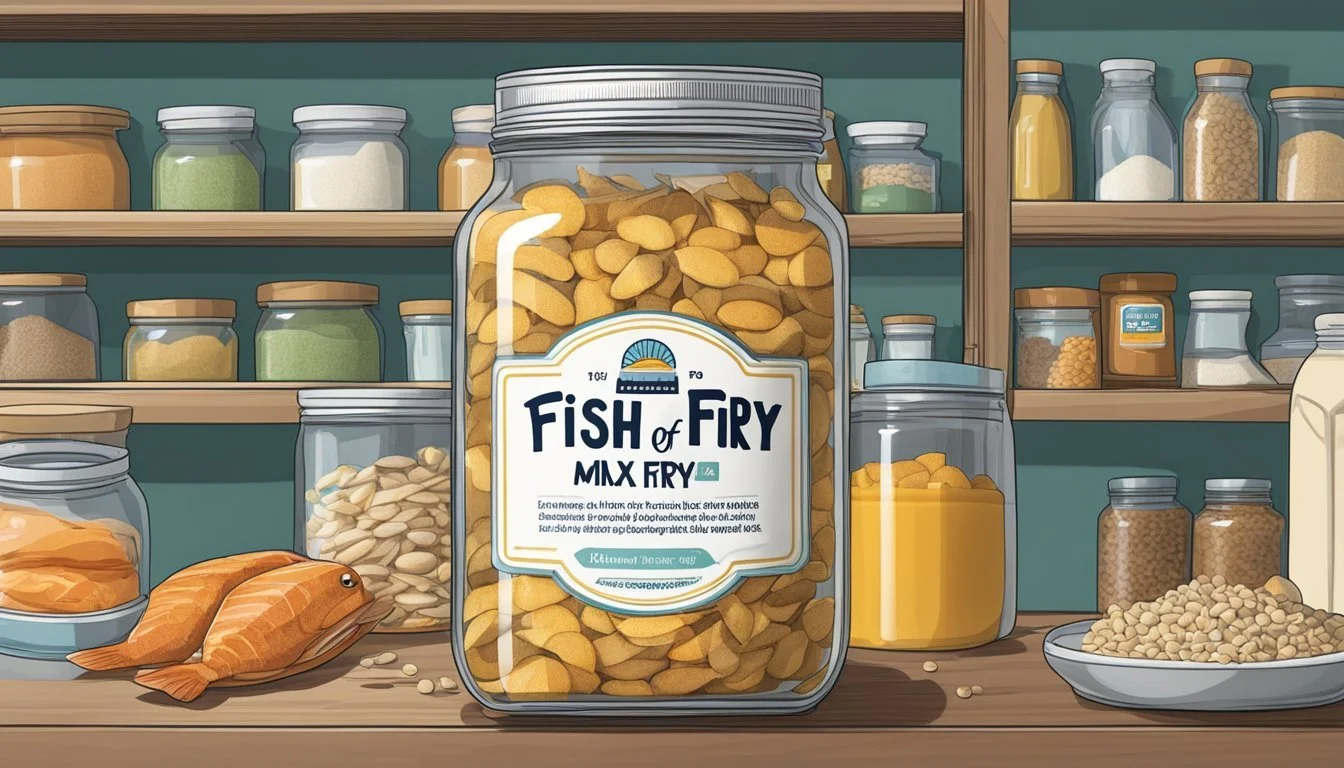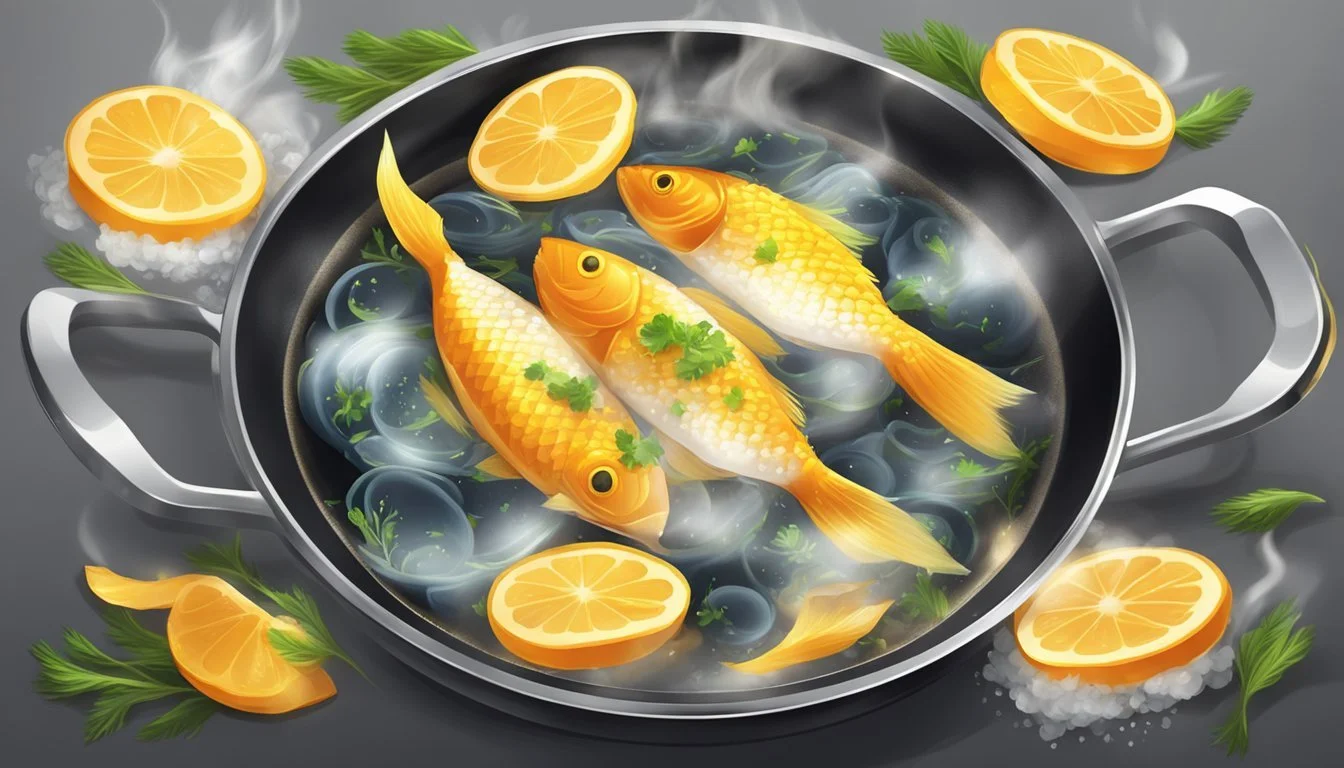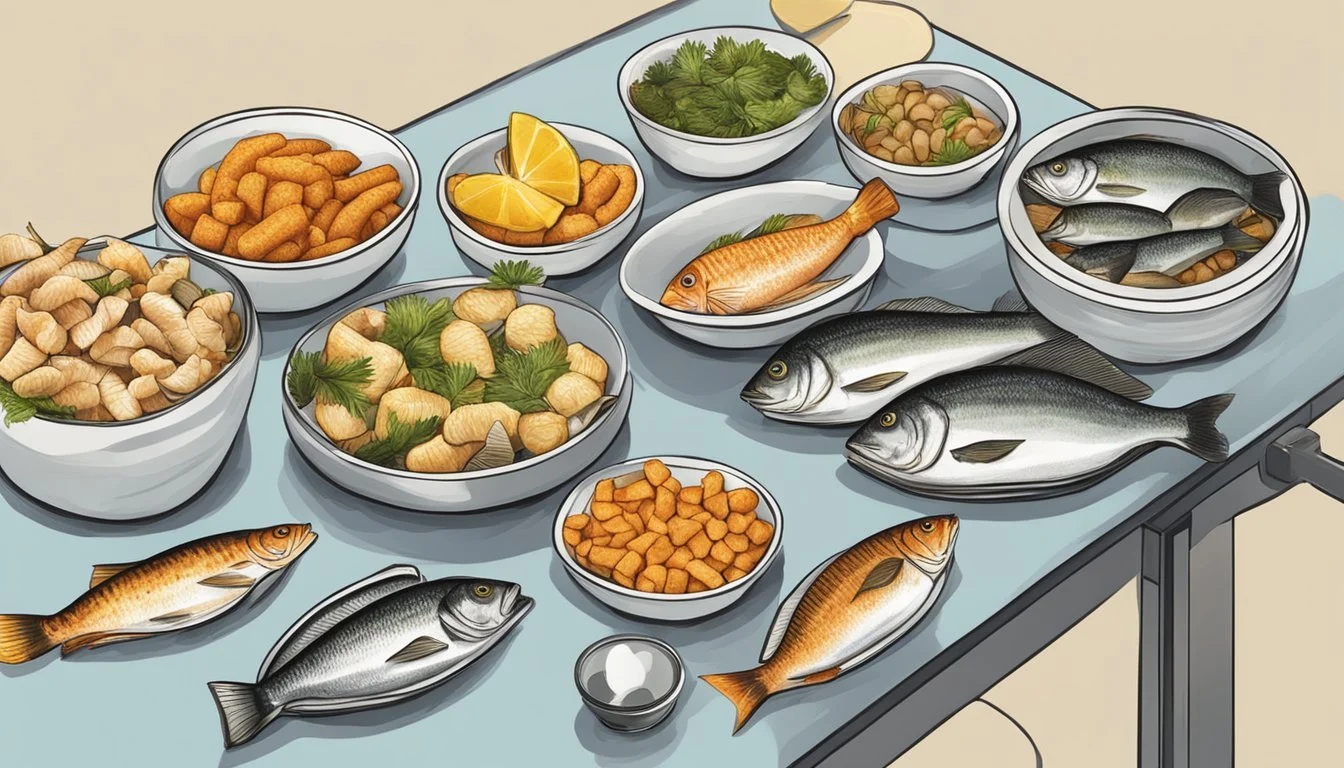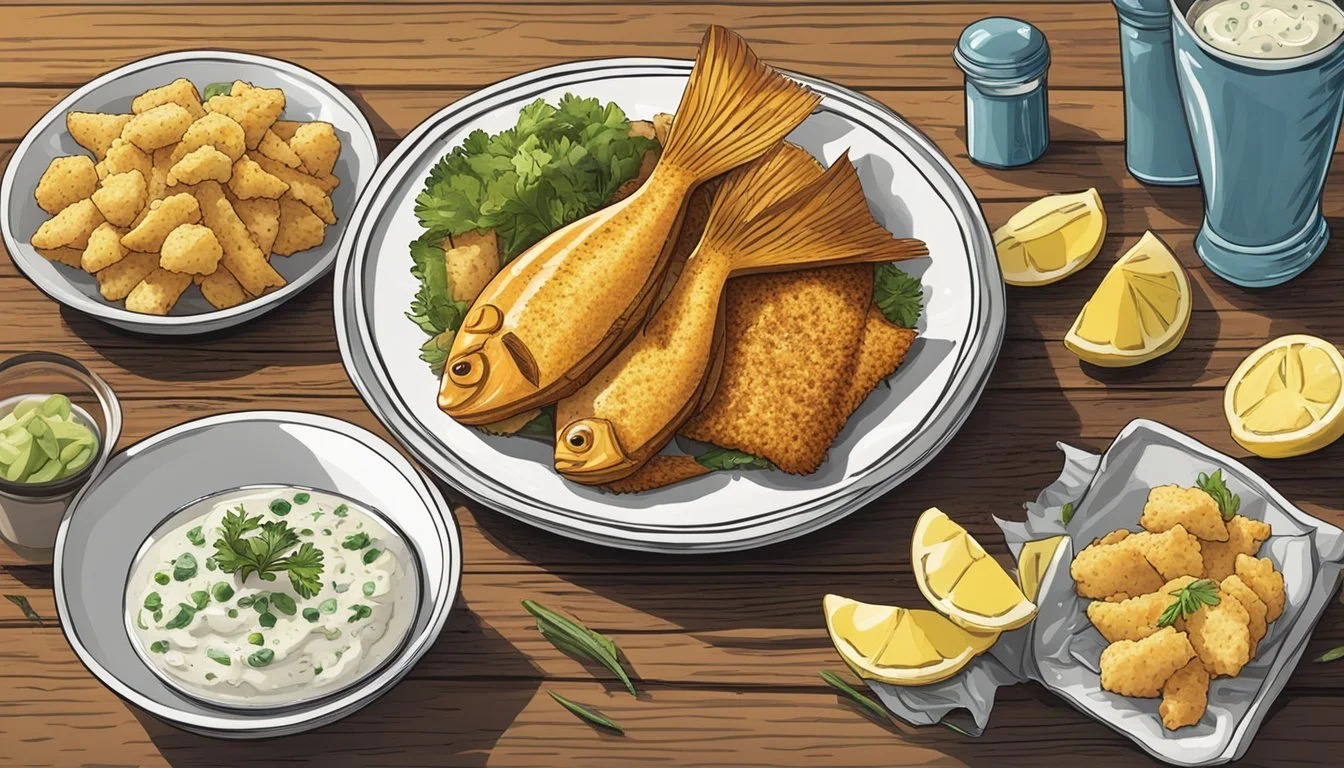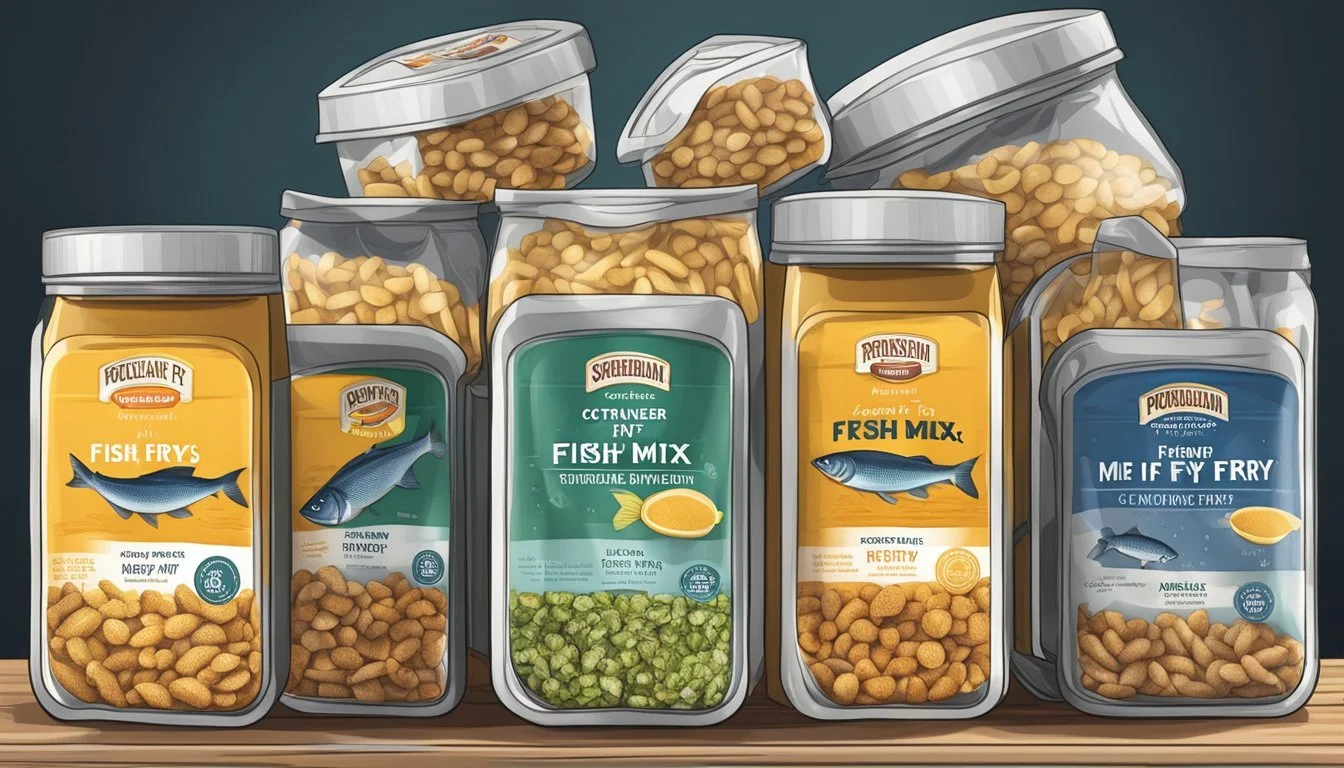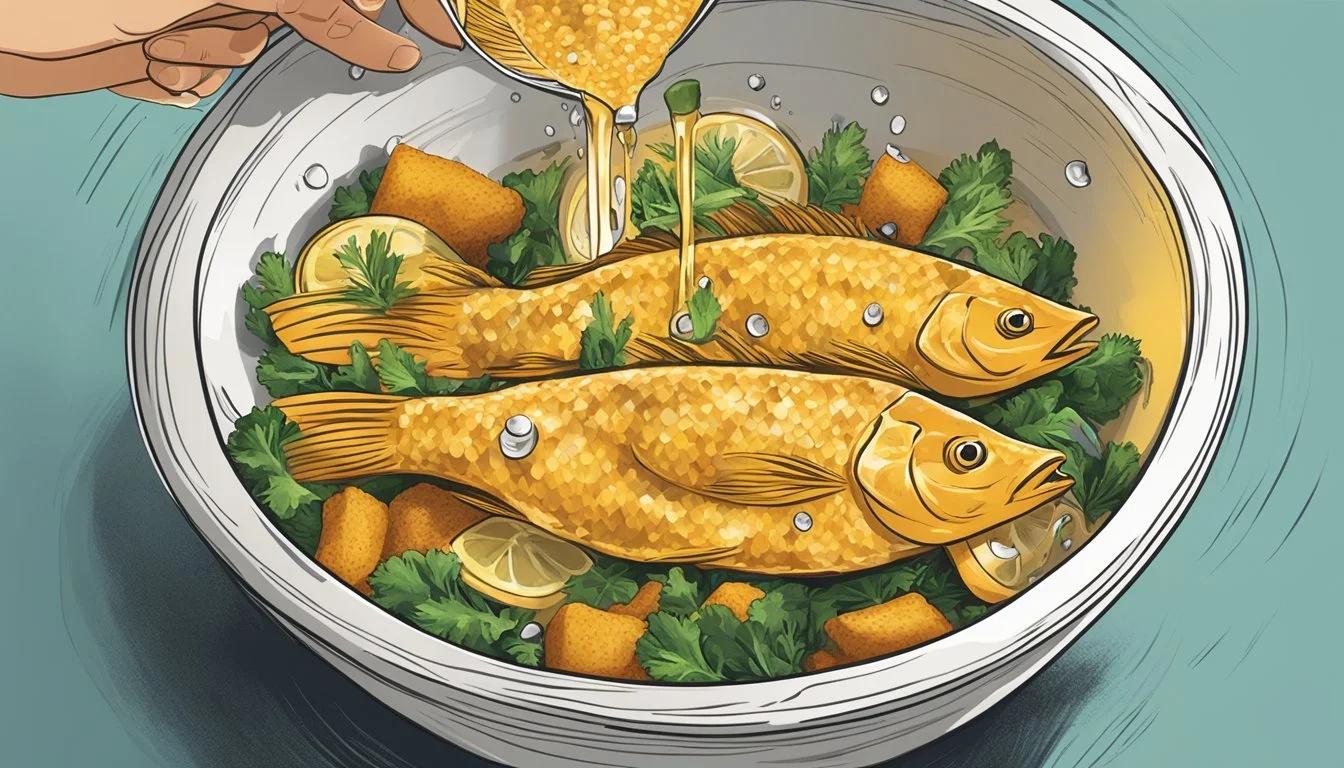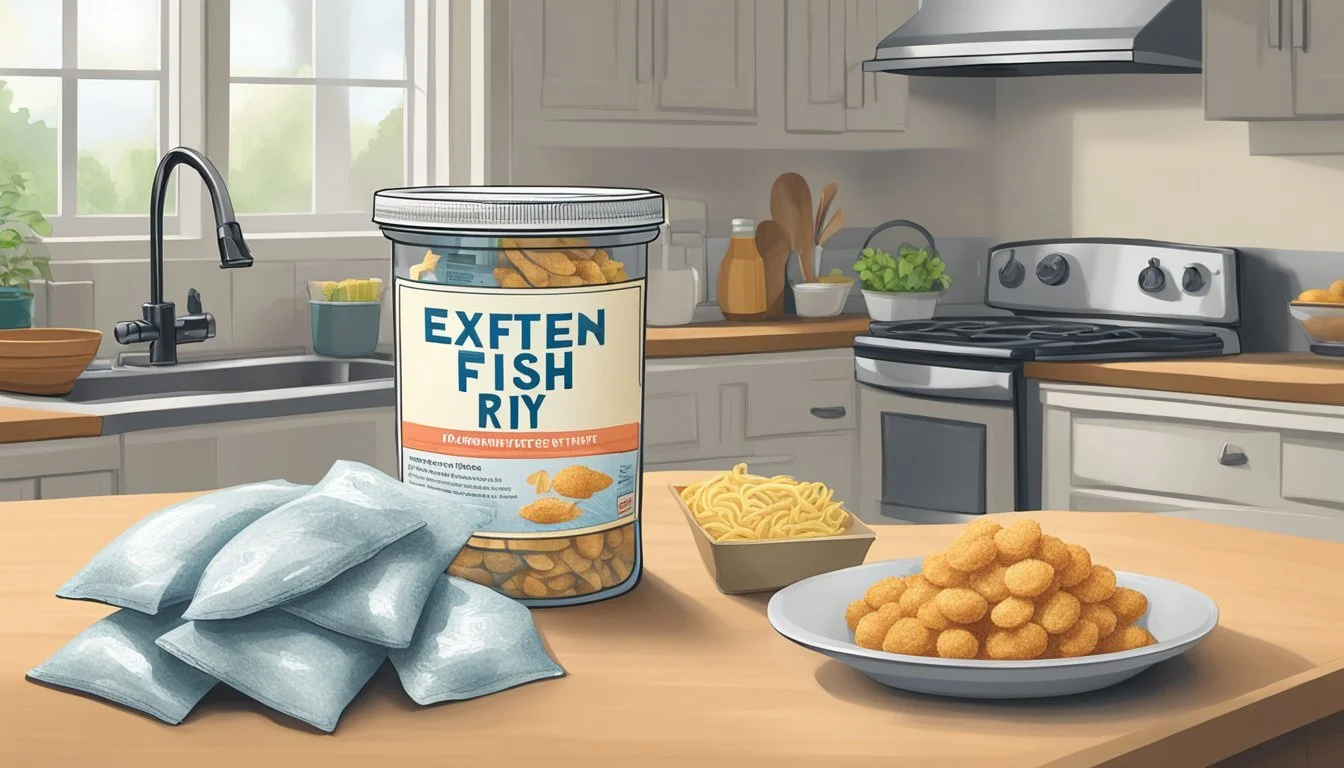How Long Does Fish Fry Mix Last?
Shelf Life and Storage Tips
Fish (What wine goes well with fish?) fry mix, a staple of southern cooking and beyond, is a blend of flour, cornmeal, and seasoning that offers a quick and flavorful coating for seafood. The mix provides a convenient and delicious way to achieve crispy, golden fish that are a highlight at many meals. Consumers often wonder about the shelf life of fish fry mix, especially when they find an old container in the back of the pantry.
The shelf life of fish fry mix can vary based on several factors, including whether the package is opened or unopened, how it is stored, and the ingredients used in the mix. An unopened package can typically last about six months, preserving its quality and flavor. Once opened, however, exposure to air, moisture, and other contaminants can lead to a shorter shelf life, typically around two months.
Proper storage is key to extending the lifespan of fish fry mix. To maintain freshness and prevent spoilage, it should be kept in a cool, dry place, such as a pantry or cupboard. Storing the mix in an airtight container can also help preserve its quality by protecting it from moisture and other environmental factors.
Understanding Fish Fry Mix
Fish fry mix is a blend of various dry ingredients typically used to create a crispy, flavorful coating for fried fish. The primary components of a standard fish fry mix include flour, cornmeal, and an assortment of seasonings such as salt, pepper, and sometimes baking powder which can help achieve a light, crispy texture.
Flour, commonly all-purpose, serves as a base, allowing the mix to stick effectively to the fish. Cornmeal adds a distinct texture and slight sweetness, enhancing the overall flavor profile. When combined, these create a coating that is both crunchy and golden when fried.
Seasonings play a critical part in the mix, contributing to the signature taste of each batch. While salt is essential for bringing out flavors, pepper offers a subtle heat. Additional herbs and spices may vary according to region and personal preference, providing each mix with a unique twist.
To prepare the mix for cooking, one would usually dredge the fish fillets in water or beer before coating with the dry mix. It’s important for the fish to be damp to ensure the mix adheres evenly.
For storage, longevity is influenced by the shelf-life of individual ingredients, with the mix typically staying fresh when kept in a dry, airtight container. Below is an overview of the main ingredients found in a fish fry mix:
Ingredient Purpose Note Flour Base for coating Provides adhesion to fish Cornmeal Texture and flavor Offers a distinct crunch Seasonings Enhance taste Includes salt, pepper, and other spices Baking Powder Promote crispiness Only used in some recipes
Each ingredient plays a specific role in ensuring that, once cooked, the fish has a delectable outer layer that is both visually appealing and delicious.
Shelf Life Factors
The shelf life of fish fry mix is influenced by several key factors, including the way it is stored and the expiration dates of the individual ingredients. Understanding these factors helps ensure the mix stays fresh and safe to use for as long as possible.
Storage Conditions
Proper storage conditions are critical in extending the shelf life of fish fry mix. The mix should be kept in a cool, dry place away from direct sunlight and heat sources. Exposure to high temperatures can accelerate the degradation process, while moisture can introduce mold and spoilage. To prevent such issues:
Store the mix in an airtight container.
Maintain a storage temperature below 75°F (24°C).
Avoid areas where drastic temperature changes occur.
Ingredients' Expiry
The shelf life of fish fry mix is also dependent on the expiration dates of the individual components, such as flour and sodium-based leavening agents. These ingredients can lose their efficacy or develop off-flavors over time. Essential points concerning ingredients' expiry include:
Regularly check the expiration dates on the package.
Discard the mix if any ingredient has passed its expiry date.
By considering these shelf life factors, one can ensure their fish fry mix retains its quality and flavor, providing optimal results when used.
Preparation Tips for Fish Frying
Achieving the perfect fish fry involves two critical factors: selecting the right oil and crafting the ideal batter. These components are essential to ensure a crispy and delicious result.
Choosing the Right Oil
To begin frying fish, one must select an oil with a high smoking point to maintain stability at high temperatures. Ideal oils for frying fish include:
Canola Oil: It has a neutral flavor and can withstand high temperatures.
Vegetable Oil: A common choice for its availability and high smoke point.
Peanut Oil: Known for imparting a subtle, nutty flavor to fried foods.
Safflower Oil: (how long does safflower oil last?) Less common but has a very high smoke point.
When heating oil for frying, one should aim for a temperature range of 350°F to 375°F. Use a thermometer to ensure accuracy, as oil that is too hot can cause the batter to burn, while oil that's not hot enough can result in greasy and soggy fish.
Achieving the Perfect Batter
The batter is the critical layer that contributes to the end-texture of fried fish. A basic, yet effective batter can be created using the following ingredients and methods:
Start with all-purpose flour for structure — the foundation for a good fry.
Eggs or milk can be used to help the flour adhere to the fish and add richness.
To introduce a lighter texture, one can incorporate carbonated liquids like beer into the batter, creating a classic beer batter.
For those who prefer a buttermilk flavor profile, buttermilk is an excellent alternative, lending a subtle tanginess.
Seasonings are crucial; blend in spices and herbs to the all-purpose flour or opt for a commercially available seasoned fish fry mix.
Batter should be mixed until it is smooth but still slightly lumpy; overmixing can cause the coating to be heavy and dense. When the fish is dipped in the batter, it should coat the fish evenly, but not be overly thick, providing a balanced ratio of fish to batter when fried to crispy perfection.
Frying Techniques
In frying fish, precision in temperature and timing is crucial to achieve a golden brown and perfectly cooked outcome.
Using a Thermometer
A reliable cooking thermometer is essential in the frying process. It ensures that oil is at the appropriate temperature, typically between 350°F and 375°F for deep frying. Maintaining this temperature range is important because if the temperature is too low, the fish will absorb excess oil and become greasy; if too high, it may burn or cook unevenly.
Determining Oil Readiness
Without a thermometer, one can determine if the oil is ready for frying by observing its behavior. When the oil starts to shimmer and if a small piece of bread drops in and sizzles, it indicates the oil is hot enough. Additionally, inserting the handle of a wooden spoon or chopstick into the oil can be telling; bubbles should steadily form around the wood if it's at the correct temperature for frying fish.
Fish Selection and Preparation
When preparing fried fish, the selection of fish and its preparation through cleaning and dredging are foundational steps that ensure the quality and flavor of the final dish.
Types of Fish for Frying
For frying, chefs often recommend white fish due to their mild flavor and sturdy texture which holds up well during the cooking process. Specific types that are popular for frying include:
Catfish: Known for its sweet, mild flavor, it is often sold as skinless fillets.
Trout: Offers a slightly nutty flavor and is commonly available.
Tilapia: Widely used for its versatility and mild taste.
Cod: A classic choice, cod is prized for its flaky, white meat.
Perch: Provides a delicate and slightly sweet profile.
Halibut: Valued for its dense, firm texture and clean taste.
These varieties lend themselves well to the frying method, resulting in a flavorful crust and tender, moist interior.
Cleaning and Dredging
Before frying, fish must be properly cleaned and prepared. Freshness is crucial — fresh fish should have a clean scent and bright, clear eyes. They should be gutted, scaled, and any skin removed if desired. Skinless fillets are often preferred to minimize the fishy taste and to better adhere to the coating. Dredging is the next critical step:
Rinse: Start by rinsing fillets thoroughly in cold water to remove any leftover scales or bones.
Dry: Pat the fish dry to ensure the dredge adheres properly.
Dredge: Coat the fish in seasoned flour or a specialized seafood breading mix. For an effective dredge, one might follow a three-step process:
Flour: Lightly coat the fish in all-purpose flour, shaking off excess.
Egg Wash: Dip the floured fillets in beaten eggs.
Breading: Finish by coating the fish in breadcrumbs, cornmeal, or another breading mix for texture.
Dredging not only adds flavor and texture but also creates a barrier that helps keep the fish moist during frying.
Serving and Accompaniments
When serving fish fries, accompaniments play a crucial role in elevating the dish. Proper sides and condiments can transform the meal into a hearty and satisfying experience.
Classic Sides
One must consider a balanced plate while planning for sides. Traditional accompaniments such as coleslaw, potato salad, and hushpuppies offer a delightful contrast to the fish's crunchy exterior. For a lighter option, one can opt for fries or chips. Both of these should be served hot and crispy, often sprinkled with salt to complement the fish's flavor. On a practical note, providing paper towels on the side is wise to handle any excess oil.
Sauces and Seasonings
Opting for the right sauces and seasonings can greatly enhance the taste experience. Tartar sauce, with its creamy texture and tangy flavor, remains a staple with fried fish. It often contains chopped pickles or capers (What wine goes well with capers?) which provide a nice texture contrast. Another popular choice is cocktail sauce, which brings a zestier kick with its combination of ketchup and horseradish. Remoulade sauce, a spicier mayonnaise-based option, can offer a hint of heat and complexity.
A more simplistic yet effective seasoning approach includes lemon wedges and vinegar. The acidity from lemon juice or a splash of vinegar can cut through the oiliness of the fish, providing a refreshing burst of flavor with each bite.
Health and Diet Considerations
When considering the longevity of fish fry mix, one should also be aware of health and dietary implications that could influence their usage and consumption.
Gluten-Free Options
For individuals with celiac disease or gluten sensitivity, it is crucial to choose fish fry mixes that do not contain wheat, rye, barley, or oats. Certain brands offer gluten-free coatings and breadings specifically formulated to cater to these dietary needs, allowing for the enjoyment of fried fish without the gluten.
Calories and Nutrition
Calories: Fish fry mixes can add a significant number of calories to a meal, primarily due to the coatings that absorb oil.
Nutrition:
Fats: Depending on the choice of oil, such as canola oil or vegetable oil, the type of fat and its health implications can vary. Canola oil, for instance, is generally recognized for having a lower saturated fat content.
Sodium: Many mixes contain added sodium for flavor, which can contribute to the overall sodium intake.
Cooking Method: The method of cooking—whether using an air fryer, oven, or deep frying—can influence the nutritional content. Oven-baked or air-fried fish may have fewer calories and less fat compared to traditional deep frying.
The choice of accompanying sides, like baked beans (how long di baked beans last?), can also affect the meal's nutritional profile, adding more fiber and protein or additional sugars and sodium, depending on the preparation.
Cultural and Regional Variations
Fish fry traditions vary by region and culture, each with unique preparation methods, seasonings, and accompaniments that reflect local tastes and historical influences.
Global Fish Fry Traditions
Fish fry traditions exist around the world, varying mainly in the types of fish used, the batter or coating, and the seasonings that lend a distinctive crunch, and avoid sogginess. In the United Kingdom, for instance, fish and chips (What wine goes well with fish and chips?) are a quintessential meal, with cod or haddock coated in a light, crispy batter. Accompaniments often include mushy peas and tartar sauce. During Lent, fish fries are common in many Catholic regions as meat is traditionally abstained from on Fridays.
Restaurants globally have adapted this tradition, tailoring the fish fry to appeal to local palates and dietary preferences, incorporating various fish types and custom seasonings. Some common attributes include:
Type of Fish: Cod, haddock, tilapia, catfish.
Coating: Beer batter, breadcrumb, cornmeal.
Seasonings: Salt, pepper, proprietary spice blends.
American Southern Fish Fry
The Southern fish fry in the United States has evolved to become a cultural cornerstone especially in Black communities. It encompasses social gatherings centered around fried fish, often featuring catfish or whiting. These events are characterized by their hospitality and the generous use of seasonings to achieve a flavorful, crunchy coating that has become synonymous with Southern cuisine. Louisiana Fish Fry Products is a brand that exemplifies this tradition, offering a range of seasoned coatings that keep the fish crispy and flavorful.
Fish fry recipes in the Southern states also might include a mix of cornmeal and flour to create the desired texture, with additional spices such as cayenne pepper to add heat. Side dishes are vital, with coleslaw, hushpuppies, and sweet tea often served. Here are typical features of a Southern fish fry:
Fish: Catfish, tilapia, whiting.
Coating: Cornmeal blend, often with a Louisiana-style seasoned mix.
Seasonings: Garlic powder, (how long does garlic powder last?) cayenne pepper, paprika.
Accompaniments: Hushpuppies, coleslaw, sweet tea.
Storing Leftover Fish Fry Mix
Proper storage of fish fry mix extends its shelf life by protecting it from moisture and maintaining a stable temperature. Utilizing airtight containers and freezing can drastically increase the mix's longevity.
Airtight Containers
Storing fish fry mix in airtight containers is essential to prevent the ingress of moisture, which can lead to clumping or spoilage. Containers should be thoroughly dried before adding the mix to ensure that no residual moisture can affect the quality.
Ensure container seals are intact
Check for any signs of damage that may compromise the seal
Freezing for Longevity
Freezing provides a long-term storage solution for fish fry mix, keeping it fresh for extended periods. When storing in the freezer, temperature fluctuations should be minimized as they can introduce moisture through condensation.
Recommended storage temperature: 0°F (-18°C)
Fish fry mix can last 6 months to 1 year when frozen
Using these methods, fish fry mix can be kept fresh, ensuring it's ready for the next delicious meal.
Frequently Asked Questions
When considering the longevity of fish fry mix, one should be aware of how storage methods impact texture and the potential for reusing the mixture for maximum efficiency.
Effect of Freezing on Texture
Freezing a fish fry mix can extend its shelf life significantly; however, it may affect the texture, resulting in a less crispy outcome when used after thawing. Ensuring minimal moisture exposure during freezing is crucial to maintain the quality of the mix. Using an airtight container can help keep the mix dry and prevent it from becoming soggy when later applied to fish.
Reusing Fish Fry Mix
The practice of reusing fish fry mix is not recommended, as it can lead to food safety issues and a decrease in quality. The mix may absorb moisture from the fish, making subsequent uses less effective at producing a crispy coating. Moreover, once it has come into contact with raw fish, any remaining mix should be discarded to prevent cross-contamination. Always use a thermometer to ensure the oil is at the correct temperature to prevent the mix from becoming soggy due to oil absorption.
Purchasing and Brands
When it comes to fish fry mix, consumers can choose between commercially available brands or crafting their own blend using various recipes. Each option has its own set of considerations regarding shelf life and flavor customization.
Commercial Mixes
Commercial fish fry mixes offer convenience and a standardized flavor profile. Notable brands such as Louisiana Fish Fry Products provide various options including gluten-free and reduced sodium varieties to cater to different dietary needs. These products are typically available in grocery stores or can be purchased online and come with a shelf-life that can range up to a year when stored properly. For instance, McCormick® Golden Dipt® Fish Fry Seafood Fry Mix clearly instructs to refrigerate after opening to maintain freshness.
Shelf Life: Ranges from 6 months to 1 year
Storage Instructions: Depends on brand; some require refrigeration after opening
Dietary Options: Gluten-free and low-sodium varieties available
Price Point: Can vary; some brands may be more premium
Homemade Mix Considerations
For those who prefer a homemade touch, creating a fish fry mix from scratch using all-purpose flour and a blend of chosen seasonings can be a gratifying experience. A homemade mix allows for complete control over the ingredients, enabling a tailored taste to suit one's preferences. Recipes may vary, but they often include a base of all-purpose flour combined with spices such as garlic powder, onion powder (how long does onion powder last?), paprika, and cayenne pepper. While homemade mixes do not have preservatives, they can generally be used immediately or stored for a shorter period than their commercial counterparts.
Customization: Ability to adjust spices to personal taste
Base Ingredient: Typically all-purpose flour
Storage: Shorter shelf life compared to commercial mixes; consume sooner for best quality
Cost Efficiency: Often more cost-effective than purchasing pre-made mixes
Safety Tips and Best Practices
When preparing Fish Fry Mix, it's crucial to prioritize safety in two key areas: handling hot oil during deep frying and preventing cross-contamination during preparation. Proper technique and vigilance are paramount.
Handling Hot Oil
Deep frying requires careful management of hot oil to ensure safety. A kitchen thermometer should always be used to monitor oil temperature, which is ideally kept between 350°F to 375°F for most frying tasks. It's important not to overfill the fryer, as oil can overflow and come into contact with the burner, creating a fire hazard. Long-sleeved clothing and oven mitts should be worn to protect skin from splatters, and one should never put wet food into the oil to avoid spattering.
Avoiding Cross-contamination
Cross-contamination is a concern when handling raw ingredients like fish. To prevent it, one should always wash their hands before and after touching raw fish. Additionally, using separate utensils, cutting boards, and plates for raw and cooked fish is crucial. Surfaces should be cleaned thoroughly with hot soapy water after they have come into contact with raw fish. Sanitizing solutions can also be used on surfaces to ensure they are free from bacteria.

